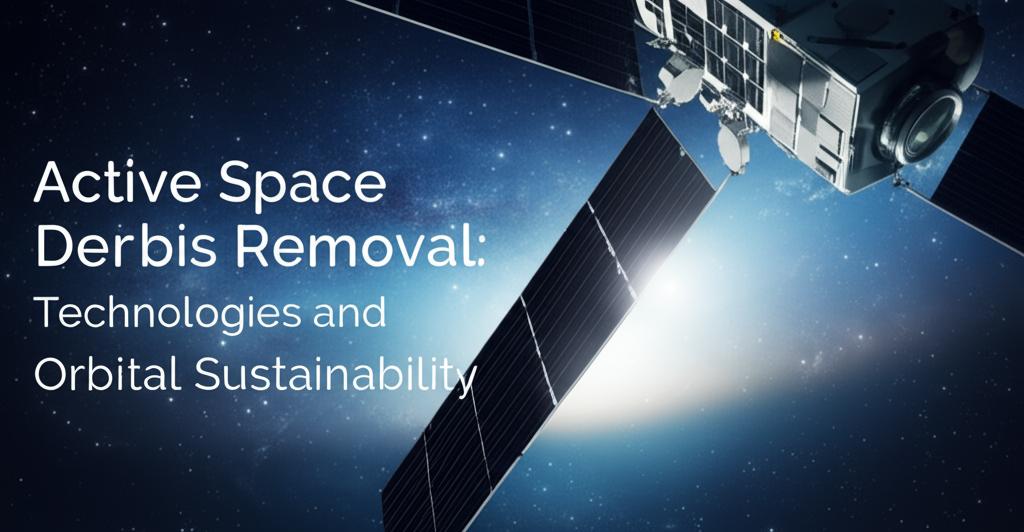The escalating issue of space debris poses a significant threat to current and future space operations, jeopardizing crucial satellite services and human spaceflight. Active Debris Removal (ADR) technologies and comprehensive orbital sustainability strategies are paramount to ensure the long-term viability of Earth's orbital environment.
The Growing Problem of Space DebrisEarth's orbit is increasingly congested with defunct satellites, spent rocket stages, and fragments from on-orbit collisions and explosions. The European Space Agency (ESA) reports tracking over 40,000 debris objects larger than 10 cm, with tens of millions of smaller, untrackable fragments also posing a risk. These objects travel at incredibly high speeds (up to 28,000 km/h), meaning even small pieces can cause catastrophic damage to operational satellites and space stations like the International Space Station (ISS), which regularly performs avoidance maneuvers. In the first half of 2024 alone, SpaceX's Starlink satellites maneuvered nearly 50,000 times to avoid collisions. This overcrowding increases the likelihood of further collisions, potentially leading to a cascade effect known as the Kessler Syndrome, which could render certain orbits unusable.
Active Debris Removal (ADR) TechnologiesAddressing this challenge requires not only mitigating the creation of new debris but also actively removing existing junk. Several innovative ADR technologies are under development and testing by governmental space agencies and private companies:
- Capture Mechanisms:
Robotic Arms and Claws: These systems allow a chaser spacecraft to precisely grab and secure debris objects. ESA's ClearSpace-1 mission, for instance, will use robotic arms to capture and deorbit a defunct ESA satellite.
Harpoon and Net Systems: Harpoons can spear larger debris, while nets can envelop and trap objects. Airbus has tested harpoon technology, and nets have been demonstrated in missions like RemoveDEBRIS.
Magnetic Capture: This technology uses powerful magnets or electromagnets to attach to debris containing magnetic materials. Astroscale is a pioneer in this area with its ELSA-d mission.
- Propulsion and Deorbiting Techniques:
Laser Ablation: Ground-based or space-based lasers can be used to heat the surface of a debris object, creating a small amount of thrust that gradually alters its trajectory, eventually causing it to burn up in Earth's atmosphere.
Tugs and Deorbit Motors: Specialized spacecraft ("tugs") can attach to debris and use their own propulsion systems to move the object into a disposal orbit or a controlled atmospheric re-entry.
Inflatable Braking Devices (IBDs): These devices, when attached to debris, increase its atmospheric drag, accelerating its orbital decay.
NASA's Active Debris Removal Vehicle (ADRV) concept is designed to approach, characterize, capture, and deorbit large debris from low-Earth orbit (LEO). It incorporates technologies for spacecraft control, debris characterization, and a capture/release system.
Orbital Sustainability: A Multifaceted ApproachBeyond active removal, long-term orbital sustainability relies on a combination of strategies:
- Debris Mitigation Measures:
Design for Demise (D4R): Future satellites are increasingly being designed to burn up completely upon atmospheric re-entry. Standardized interfaces, like the MICE (Mechanical Interface for Capture) being tested by ESA, can also make future removal missions easier and more efficient.
End-of-Life (EOL) Disposal: Satellites should be designed with built-in capabilities for deorbiting, either through controlled atmospheric re-entry or by moving to a "graveyard orbit" away from operational altitudes. This includes having sufficient fuel and robust passivation techniques to prevent on-orbit explosions.
Preventing Intentional Release: Avoiding the deliberate release of mission-related objects like lens caps or protective covers is crucial.
- Space Traffic Management and Tracking:
Enhanced Detection and Tracking: Improving the ability to detect and track smaller debris pieces is critical. Systems like the U.S. Space Force's Space Fence aim to significantly increase the number of trackable objects.
Collision Avoidance: Accurate tracking data enables operators to predict potential collisions and maneuver active satellites to safety. Improved collision avoidance strategies, including automation and communication protocols, are needed.
- In-Orbit Servicing and Manufacturing (ISAM):
Extending Satellite Lifespans: Technologies for refueling, repairing, and upgrading satellites in orbit can extend their operational lives, reducing the rate at which they become debris. Companies like Northrop Grumman are developing mission extension vehicles.
Reusable Launch Vehicles: Companies like SpaceX and Blue Origin are pioneering reusable rockets, which reduce the number of discarded rocket stages left in orbit.
- International Collaboration and Regulation:
Global Cooperation: The transboundary nature of space debris necessitates coordinated global efforts. Organizations like the United Nations Office for Outer Space Affairs (UNOOSA) and the Inter-Agency Space Debris Coordination Committee (IADC) work on international guidelines.
Regulatory Frameworks: Initiatives like ESA's "Zero Debris approach" (aiming for no net new debris from its missions by 2030) and similar goals by ISRO are driving policy changes. The FCC in the U.S. is also looking to update its orbital debris mitigation rules.
Addressing Dual-Use Concerns: ADR technologies can be dual-use, potentially being seen as space weapons. Open dialogue and transparency are needed to build trust and avoid escalating geopolitical tensions.
Challenges and the Path ForwardDespite technological advancements, significant challenges remain. The high cost of ADR missions and the technical complexities of capturing uncooperative, tumbling objects are major hurdles. Furthermore, unresolved political and legal issues, including liability for debris removal and the potential for misuse of ADR technologies, need to be addressed.
The future of orbital sustainability depends on continued investment in ADR technologies, robust international cooperation, and the widespread adoption of responsible space practices. Initiatives like NASA's Space Sustainability Strategy and ESA's Clean Space program are crucial for developing the necessary technologies and guidelines. By taking proactive measures now, the global space community can work towards ensuring that Earth's orbit remains a safe and accessible resource for future generations.

